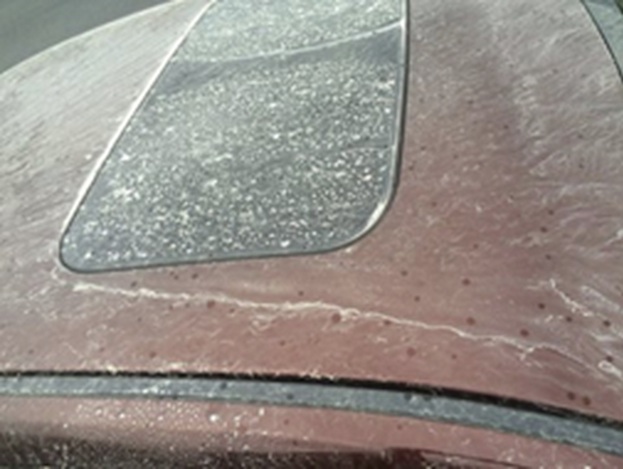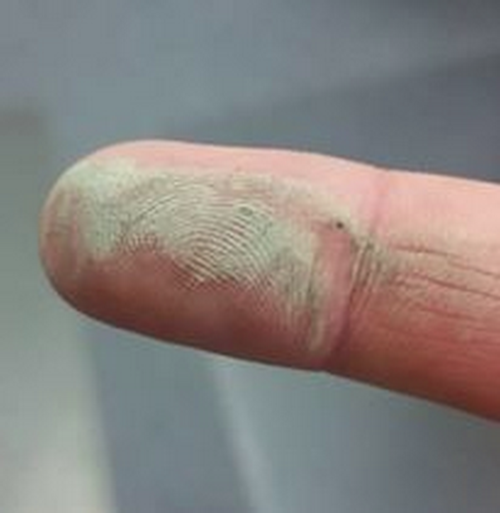It's Raining Milk! Odd Weather Puzzles Scientists

This story was updated Feb. 24 at 10:20 a.m. EST.
Milky white rain poured down on eastern Washington state and northeast Oregon on a wintery morning last week.
"I walked out to go somewhere in my car, and I noticed it was covered with mud," said Robin Priddy, director of Benton Clean Air in Kennewick, Washington. "Sometimes it's dusty over here, so I didn't think much of it. But then I started hearing from people that it's raining mud."
Dust likely gave the rain its light hue, but it's unclear where the dust came from, especially since it was a windless day, Priddy told Live Science. [Weirdo Weather: 7 Rare Weather Events]
The inland Northwest is typically dry, so "it's not crazy unusual to get dust storms here," Priddy said. In fact, "muddy rain" isn't that unusual in this region in the summer months, according to a National Weather Service (NWS) blog. But it's rare to see muddy rain in the winter, and the rain's mysterious white color still has researchers scratching their heads.
It's possible that a strong wind, carrying dust from far away, blew high into the atmosphere and then mixed with the rain over Washington and Oregon. Initially, researchers suspected a large dust storm in northwest Nevada with winds topping 93 mph (150 km/h), but a weather computer program showed this was not the cause.
The program uses vast amounts of meteorological data to predict where particles such as smoke or dust can travel in a given amount of time. It found that the dust from the Nevada storm would have blown too far to the east to affect the areas receiving milky rain, researchers found.
Sign up for the Live Science daily newsletter now
Get the world’s most fascinating discoveries delivered straight to your inbox.

Other meteorologists have suggested that volcanic activity in Russia or ash from burn scars in the western United States caused the milky rain. However, if ash were the culprit, it likely would have affected western Washington, which didn't see any milky rain. And the burn scars in California, Oregon and Washington were soggy from rain, and likely couldn't be lifted by the wind and blown to the inland Northwest, according to the blog.
Currently, meteorologists say dust from Summer Lake, in south-central Oregon, is the likeliest suspect. There are weather reports of dust blowing off of the lake's dry beds on Feb. 5, and the computer program projected that dust would hit eastern Washington and northeast Oregon just before the rain started.
Though researchers at Benton Clean Air took samples of the dusty rain for testing, "I don't have great expectations that it's going to tell us where it's from," Priddy said. Dust and ash are largely similar in chemical analyses, and the lab technicians weren't tasked with figuring out the origins of the sediment.
"We're just asking them what's in the sample," she said. "That way, at least we can say what is in it."
Meteorologists at the Pacific Northwest National Laboratory also took samples, though later found they didn't collect enough to analyze, said Mary Beckman, a lab spokeswoman. But the lab never planned to do a real study on the material, she said. "It was purely out of curiosity."
In 1980, when southern Washington's Mount St. Helens erupted, ash caked the surrounding area. The recent milky rain is much less of a nuisance, said Priddy, who advised people to wash it off their cars with water.
Update
A liquid sample of the milky rain contains as much sodium as silicon, and trace amounts of aluminum, potassium, magnesium, calcium, iron, manganese and organic carbon, according to lab results obtained by the Benton Clean Air Agency on Feb. 23.
It’s unclear where the elements came from, but "nothing in the sample suggests that a public health risk existed during or after the event," Priddy said in an email to Live Science.
Editor's Note: This article was updated to include new information about the contents of the milky rain.
Follow Laura Geggel on Twitter @LauraGeggel. Follow Live Science @livescience, Facebook & Google+. Original article on Live Science.

Laura is the archaeology and Life's Little Mysteries editor at Live Science. She also reports on general science, including paleontology. Her work has appeared in The New York Times, Scholastic, Popular Science and Spectrum, a site on autism research. She has won multiple awards from the Society of Professional Journalists and the Washington Newspaper Publishers Association for her reporting at a weekly newspaper near Seattle. Laura holds a bachelor's degree in English literature and psychology from Washington University in St. Louis and a master's degree in science writing from NYU.









